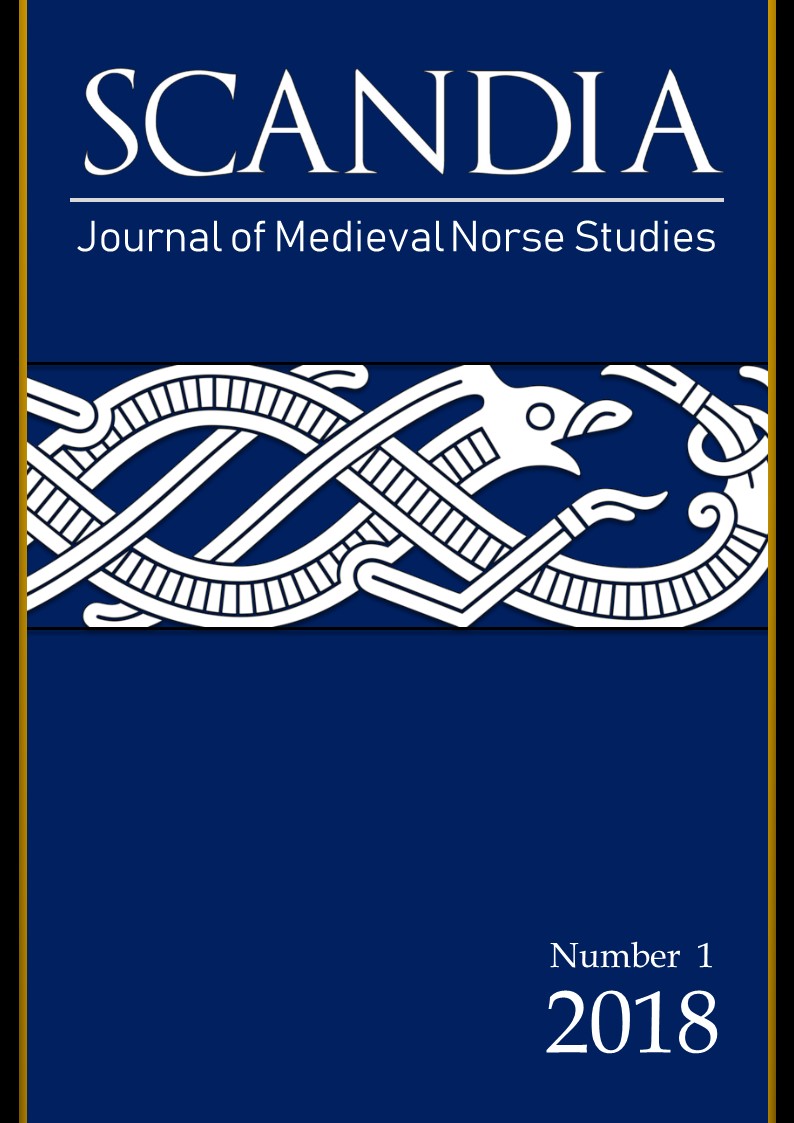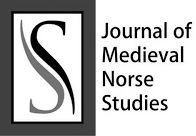Den syvende far i huset (O sétimo pai na casa): tradução e análise
Abstract
Resumo: Um importante componente da coleção de contos maravilhosos coletados pelos folcloristas Asbjørnsen e Moe, o conto O sétimo pai da casa apresenta vestígios da antiga religião nórdica e exemplos de usos e costumes culturais na Noruega. Este artigo apresenta uma tradução do conto que objetiva valorizar a legitimidade do texto etnográfico e proporcionar aproximações sociais. Contendo elementos que remetem ao passado mitológico escandinavo, o conto traduzido é aqui analisado sob a perspectiva das Ciências das Religiões para uma melhor compreensão do seu conteúdo através de uma análise interpretativa e sistêmica.
Abstract: An important component of the collection of wonderful tales collected by folklorists Asbjørnsen and Moe, the tale The seventh father of the house features traces of the ancient Nordic religion and examples of cultural customs and customs in Norway. This article presents a translation of the tale that aims to value the legitimacy of the ethnographic text and to provide social approximations. Containing elements that refer to the Scandinavian mythological past, the translated tale is analyzed here from the perspective of the Sciences of Religions for a better understanding of its content through an interpretative and systemic analysis.
Downloads
References
Fontes primárias:
AUBERT, F. H. Askeladen & Outras Aventuras. São Paulo: Edusp, 1995.
Estela Bildsten av sten, Gotland, Suécia. Museu histórico de Estocolmo. Disponível em: < http://historiska.se/upptackhistorien/object/44501-bildsten-av-sten/>. Acessado em: 25 out. 2018.
Illustreret Nyhedsblad: ugentlige Efterretninger om Nutidens vigtigste Begivenheder og Personligheder ; samt Dagens Nyheder, offentligt og selskabeligt Liv, Videnskab og Kunst, etc. Christiania, 21 de maio de 1853, N. 21, Volume II, p. 81-82.
RANISCH, Wilhelm; DOEPLER, Carl Emil. Walhall: Die Götterwelt der Germanen. Königswinter: Lempertz Edition and Verlagsbuchhandlung, 2010.
STURLUSSON, Snorri. Edda menor: traducción del antiguo idioma escandinavo premiada por el rey de Suecia com la medalla de oro. Tradução de Angel de los Rios. Madrid: Imprenta de la esparanza, 1856.
______. Ynglinga Saga. The Online Medieval & Classical Library. Tradução de Samuel Laing. Disponível em: < http://mcllibrary.org/Heimskringla/ynglinga.html>. Acessado em 25 nov. 2018.
WERENSKIOLD, Erik. Den syvende far i huset, 1878. Disponível em: < http://samling.nasjonalmuseet.no/no/object/NG.K_H.B.05099>. Acessado em: 25 out. 2018.
Fontes secundárias:
ÁLVAREZ, María P. F.; ANTÓN, Teodoro M. Antología de la literatura nórdica antigua. Salamanca: Ediciones Universidad Salamanca, 2003. AYOUB, Munir Lufte. Gođkynningr: o rei escandinavo como ponte entre deuses e homens. Dissertação (Mestrado em História). Pontifícia Universidade Católica de São Paulo, São Paulo, 2013.
BERMAN, Antoine. A tradução e a letra: ou o albergue do longínquo. Tradução de Marie-Hélène Catherine Torres, Mauri Furlan, Andreia Guerini. Rio de Janeiro: 7Letras/PGET, 2007.
BOYER, Régis. “Roi sacré”. Héros et dieux du nord. Paris: Flammarion, 1997.
BØ, Gudleiv. Å dikte Norge. Oslo: Fagbokforlaget, 2007. DARNTON. Robert. O grande massacre de gatos e outros episódios da história cultural francesa. Tradução de Sônia Coutinho. Rio de Janeiro: Edições Graal, 1988.
FURRE, Berge. História da Noruega, século XX: da independência ao estado de bem-estar social. Blumenau, EDIFURB, 2006. GUNNELL, Terry. The origins of drama in scandinavia. Cambridge: D. S. Brewe, 1995.
HAGEN, Ann. A second handbook of anglo-saxon food & drink: production e distribution. Hockwold cum Wilton, Norfolk, Reino Unido: Livros anglo-saxões. 1995.
HEDEAGER, Lotte. Iron age myth and materiality: an archaeology of Scandinavia AD 400-1000. New York: Rouledge, 2011. ______. Iron age societies. Tradução de John Hines. Cambridge: Three Cambridge Center, 1992.
HOEL, Sigurd. Eventyrene våre. Essays i utvalg. Oslo, 1962.
LANGER, Johnni. (Org.). Dicionário de Mitologia Nórdica: símbolos, mitos e ritos. São Paulo: Hedra, 2015.
______. As estelas de Gotland e as fontes iconográficas da mitologia viking: os sistemas de reinterpretações oral-imagéticos. In: Brathair. São Luís, v. 6, n. 1, 2006. pp. 10-41.
LINDOW, John. Norse mythology: a guide to the Gods, heroes, rituals, and beliefs. New York: Osford University Press, 2001.
LÓPEZ, Inés García. El periplo de los Hávamál em los países de habla germánica: aspectos de su recepción ecdótica, traductología y teórico-crítica. 2015. Tese de doutorado (doutorado em Filologia). Universitat de Barcelona, Barcelona, 2015.
MAGERØY, Ellen Marie. Carving: bone, horn, and walrus tusk. In: Medieval Scandinavia. An encyclopedia. Phillip Pulsiano et al., Garland reference library of the humanities. New York: Garland. 1993. pp. 66-71.
NILSSON, K. Desafios na tradução do norueguês para o português, ilustrados pela versão brasileira de alguns contos populares. Tradterm, v. 5, n. 1, p. 159-182, 18 jun. 1998.
SCHJØDT, Jens Peter. The warrior in old norse religion. In: Steinsland, Gro et al. (Orgs.). Ideology and Power in the Viking and Middle Ages: Scandinavia, Iceland, Ireland, Orkney and the faeroes. Boston: Brill, 2011. _
_____. Initiation between two worlds: structure and symbolism in pre-Christian Scandinavian religion. Odense: The University Press of Southern Denmark, 2008.
SKARD, Vemund. Norsk Språk Historie. Bind I til 1523. Oslo: Universitetsforlaget, 1973.
VIKØR, Lars. S.; TORP, Arne. Hovuddrag i norsk språkhistorie. Oslo: Ad notam Gyldendal, 1994.
Downloads
Published
Issue
Section
License
The author (s) of the original submitted undertake to comply with the following:
- All authors are publicly responsible for it.
- The authors claim that this original is their own and that they assume full responsibility to third parties, whether moral or patrimonial, by reason of its content, stating that the work does not infringe any intellectual property rights of third parties.
- The author (s) agree to the copyrights of the original to Scandia Journal, to which they grant permission for its reproduction, editing and online publication.
- The author (s) grant their copyright of their original to the Scandia Journal, licensed under the Creative Commons Attribution License, which allows the sharing of this work with the acknowledgment of their authorship.
- The author (s) have permission and are encouraged to cite and distribute their original.



